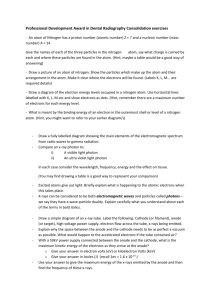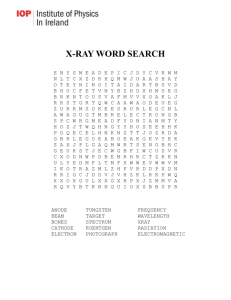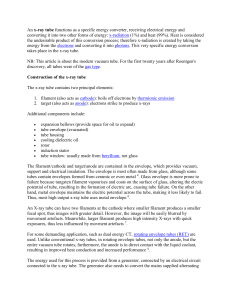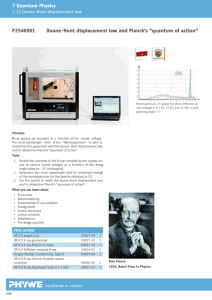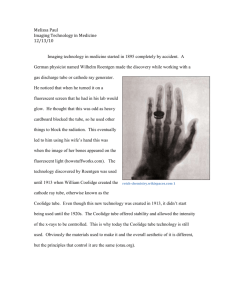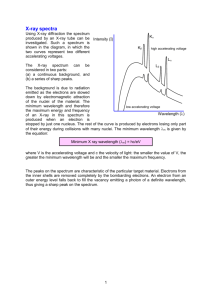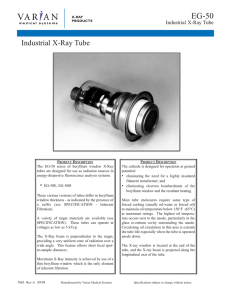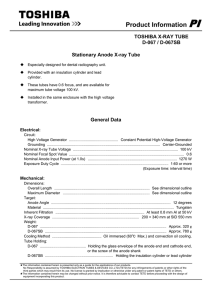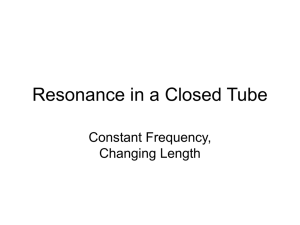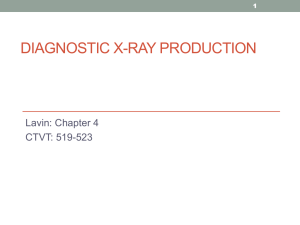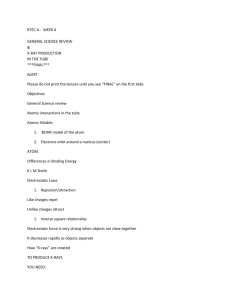X-ray Physics Problems: Wavelength, Frequency, Voltage
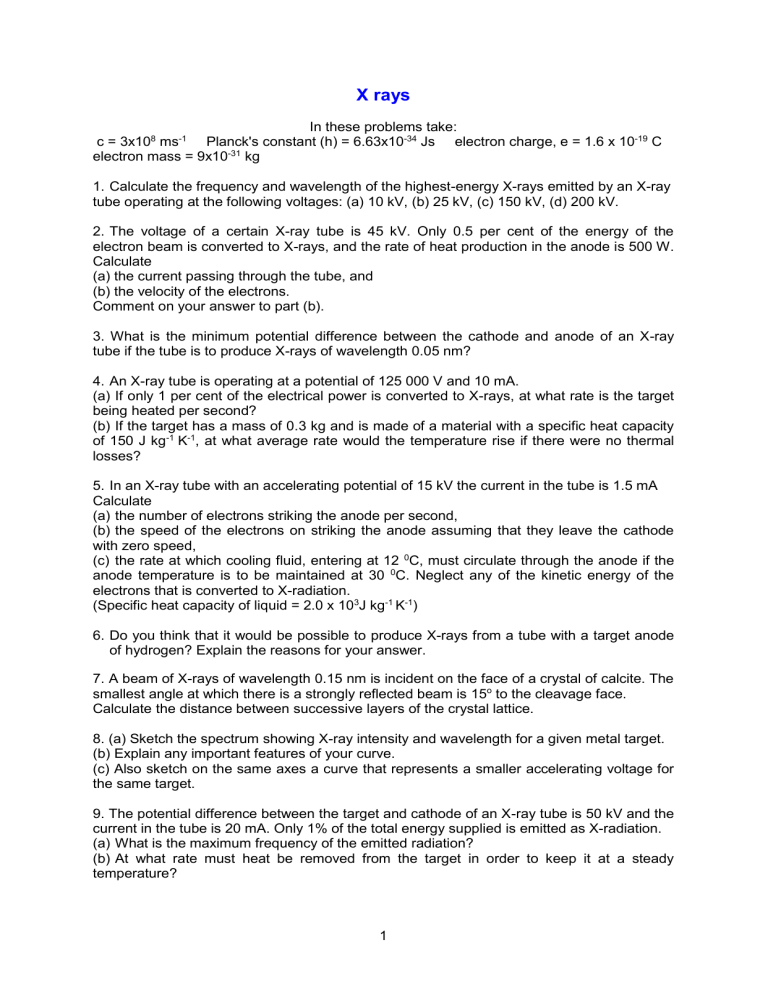
X rays
In these problems take:
c = 3x10 8 ms -1 Planck's constant (h) = 6.63x10
-34 Js electron charge, e = 1.6 x 10 -19 C electron mass = 9x10 -31 kg
1. Calculate the frequency and wavelength of the highest-energy X-rays emitted by an X-ray tube operating at the following voltages: (a) 10 kV, (b) 25 kV, (c) 150 kV, (d) 200 kV.
2. The voltage of a certain X-ray tube is 45 kV. Only 0.5 per cent of the energy of the electron beam is converted to X-rays, and the rate of heat production in the anode is 500 W.
Calculate
(a) the current passing through the tube, and
(b) the velocity of the electrons.
Comment on your answer to part (b).
3. What is the minimum potential difference between the cathode and anode of an X-ray tube if the tube is to produce X-rays of wavelength 0.05 nm?
4. An X-ray tube is operating at a potential of 125 000 V and 10 mA.
(a) If only 1 per cent of the electrical power is converted to X-rays, at what rate is the target being heated per second?
(b) If the target has a mass of 0.3 kg and is made of a material with a specific heat capacity of 150 J kg -1 K -1 , at what average rate would the temperature rise if there were no thermal losses?
5. In an X-ray tube with an accelerating potential of 15 kV the current in the tube is 1.5 mA
Calculate
(a) the number of electrons striking the anode per second,
(b) the speed of the electrons on striking the anode assuming that they leave the cathode with zero speed,
(c) the rate at which cooling fluid, entering at 12 0 C, must circulate through the anode if the anode temperature is to be maintained at 30 0 C. Neglect any of the kinetic energy of the electrons that is converted to X-radiation.
(Specific heat capacity of liquid = 2.0 x 10 3 J kg -1 K -1 )
6. Do you think that it would be possible to produce X-rays from a tube with a target anode of hydrogen? Explain the reasons for your answer.
7. A beam of X-rays of wavelength 0.15 nm is incident on the face of a crystal of calcite. The smallest angle at which there is a strongly reflected beam is 15 o to the cleavage face.
Calculate the distance between successive layers of the crystal lattice.
8. (a) Sketch the spectrum showing X-ray intensity and wavelength for a given metal target.
(b) Explain any important features of your curve.
(c) Also sketch on the same axes a curve that represents a smaller accelerating voltage for the same target.
9. The potential difference between the target and cathode of an X-ray tube is 50 kV and the current in the tube is 20 mA. Only 1% of the total energy supplied is emitted as X-radiation.
(a) What is the maximum frequency of the emitted radiation?
(b) At what rate must heat be removed from the target in order to keep it at a steady temperature?
1
10. Using the graphs in the diagram to answer the following questions:
(a) explain why graph (a) shows four curves although the same single metal target was used for each;
(b) calculate the energies associated with the K
,
and K lines shown in graph (b);
(c) calculate the accelerating voltages for each line on both graphs.
14 14
Intensity 12 Intensity 12
(arbitrary units) (arbitrary units) K
10
2
10
8 8
K
6 6
4 4
2
0
0 0.02 0.04 0.06 0.08 0.1
Wavelength (nm)
0
0 0.02 0.04 0.06 0.08 0.1
Wavelength (nm)
(a)
(b)
2
